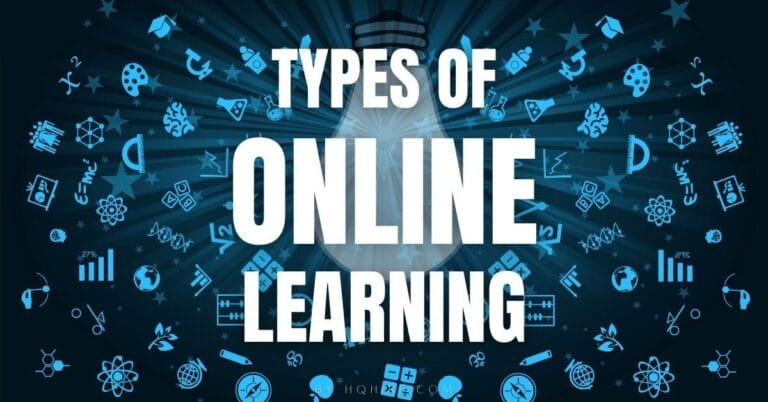Are you looking to set goals that leads to greater productivity, clearer objectives, and measurable results? OKRs framework is a powerful goal setting model that can supercharge your personal growth, career, and business.
KEY TAKEAWAY
- OKRs Framework offers a complete blueprint for you to reach your desired goals through strategic and measurable manner.
- OKR stand for Objectives and Key Results and there are 3 different types of OKRs, namely Committed OKRs, Aspirational OKRs, and Learning OKRs.
- OKR is all about getting towards your goals, it takes out the guessing and focus only on the measurables, helping you get from “Point A” to “Point B” with a plan in place.
What Are OKRs?
OKRs is a goal-setting framework that is all about setting ambitious, measurable goals that drive results. It’s a system designed to align and engage an entire organization, from top to bottom, in pursuit of common objectives.
OKRs is the acronym for Objectives and Key Results.
Adopted by companies and individuals, OKR is a methodology used to set and achieve ambitious goals with high clarity and defined manner.
History of Objective and Key Results (OKR)
OKR is a goal-setting framework pioneered by Andy Grove, the former CEO of Intel and was later popularized by John Doerr at Google.
How OKR Framework Works for Goal-Setting?
OKR frameworks works by identifying and changing these three components:
- Objectives
- Key Results
- OKR cycle
And here is a quick break down on each of the components of OKR.
1. Setting Your Objectives
These are the big, ambitious goals you want to achieve. They should be inspiring and challenging.
- Objectives are the “what” – they define the goals you want to achieve. They are qualitative and ambitious.
2. Identifying Your Key Results
These are the specific, measurable outcomes that indicate progress toward your objectives. Key Results are the heart of OKRs, and they should be quantifiable and achievable.
- Key Results are the “how” – they outline the specific, measurable steps needed to accomplish the objectives.
3. Getting Through The OKR Cycle
OKR cycle is the process of setting a time to review both the objectives and the key results on a periodically basis.
The OKR cycle are typically set and reviewed on a quarterly basis, allowing for agility and adaptability.
How to Set Your OKRs For Your Business
Setting OKRs is both an art and a science. It involves careful consideration of what you want to achieve and how you’ll measure progress.
- OKRs should be ambitious but achievable.
- They should be specific, measurable, and time-bound.
- Avoid making them too easy; OKRs should push you to excel.
Here’s a simplified process to set your OKRs.
1. Define Objectives
Start by identifying your overarching goals. Ask questions like:
- What do you want to accomplish?
- What is your true objective that actually matters?
- What is the vision you have for the far future?
Make sure your objectives are inspiring and aligned with your organization’s mission.
2. Set Key Results
Break down each objective into specific key results. These should be quantifiable and time-bound. Ask questions like:
- What are the measurable metrics that can help me identify if I have achieved what I want?
- When is the exact dateline for me to achieve my goals?
Your key results should be set in a way that you will clearly know when you’ve achieved them.
3. Track Progress
Regularly update and track your progress toward your key results. When tracking your progress you can do things like:
- Breaking down your goals into small milestone and track it on a periodically basis.
- Set a weekly, monthly or quarterly review to identify the roadblocks and what is need to be done to overcome it.
- Create a A3, 8D, Gantt Chart or DMAIC to track your progress.
This keeps everyone accountable and focused on the end goal.
3 Different Types of OKR Methodology
Objectives and Key Results (OKRs) are separated into 3 different types, each serves a unique purpose and is tailored to specific objectives, the three main categories of OKRs are: Committed OKRs, Aspirational OKRs, and Learning OKRs.
1. Committed OKRs
Committed OKRs are the bedrock of goal-setting within organizations. They represent the goals that everyone agrees need to be achieved for success to be realized.
These OKRs are the non-negotiables, the objectives that organizations prioritize above all else. They are the roadmap to accomplishing the essential tasks within a given time frame, often set on a quarterly basis.
Key Characteristics of Committed OKRs:
- Achievement Expectation: Committed OKRs are expected to achieve a score of 1.0, signifying that all Key Results must be met without exception.
- Resource Allocation: Individuals and teams must allocate resources, time, and effort to ensure the successful accomplishment of these objectives.
- Business-as-Usual: Committed OKRs often depict ongoing business processes and their associated measurable outcomes.
2. Aspirational OKRs
Aspirational OKRs are the moonshots of the goal-setting world. They are characterized by their ambitious and visionary nature.
These OKRs reach for the stars, aiming for objectives that are challenging to achieve fully. Even if an aspirational OKR falls short of 100% completion, it can still lead to remarkable achievements.
Key Characteristics of Aspirational OKRs:
- Ambitious Goals: Aspirational OKRs encapsulate stretch goals, often referred to as 10x goals. They aim high and push individuals and teams outside their comfort zones.
- Achievement Expectation: Unlike Committed OKRs, aspirational objectives are expected to achieve an average score of 0.7, allowing for some variance in performance.
- Flexible Path: Aspirational OKRs don’t come with a predefined path to success, making them ideal for visionary objectives.
- Alignment and Experimentation: Achieving aspirational OKRs requires alignment across departments and a culture that supports experimentation, learning from failures, and trying new ideas.
3. Learning OKRs
Learning OKRs are the exploratory arm of goal-setting. They are designed for situations where the desired outcomes are not yet clear, but the idea or hypothesis is considered a top priority.
These OKRs focus on experimentation and learning, aiming to prove or disprove theories and gather valuable insights.
Key Characteristics of Learning OKRs:
- Hypothesis-Driven: Learning OKRs revolve around proving or disproving hypotheses. They seek to uncover information that informs future actions.
- Adaptability: Learning OKRs are well-suited for early-stage ideas or projects where inputs and outputs may not be fully defined.
- Reporting Findings: The expectation with a learning OKR is to report findings at the end of the cycle, providing intelligence on how to proceed or craft the next set of OKRs.
Comparing The Different Types of OKRs
The 3 types of OKRs, Committed OKRs, Aspirational OKRs, and Learning OKRs each have its own pros and cons, making it suitable for different scenarios.
Here we have created a simple comparison table that let you compare the differences between each type of OKRs.
| Aspect | Committed OKRs | Aspirational OKRs | Learning OKRs |
|---|---|---|---|
| Achievement Expectation | Expected to achieve 100% success. | Expected to achieve around 70% success, allowing for variance. | Focus on learning and reporting findings, not necessarily full achievement. |
| Nature of Goals | Essential, non-negotiable objectives. | Ambitious and visionary stretch goals. | Exploration and experimentation to prove or disprove hypotheses. |
| Resource Allocation | Significant allocation of resources, time, and effort. | Resource allocation may vary, as the path to success is flexible. | Allocation of resources for learning and experimentation. |
| Path to Success | Clear path with measurable outcomes. | May not have a predefined path, allowing for creative approaches. | Flexible path focused on uncovering insights. |
| Alignment | Alignment across teams is essential. | Alignment is important but allows room for innovation. | Alignment around learning objectives. |
| Risk Tolerance | Lower tolerance for failure, aiming for 100% achievement. | Tolerates some level of failure, aiming for significant progress. | Acceptance of potential failure for the sake of learning. |
Committed OKRs
Committed OKRs are best used when:
- You have clear, non-negotiable objectives that require full commitment and resources.
Use them when your organization needs to prioritize and achieve specific goals with high certainty.
These OKRs are ideal for day-to-day operations and core business functions where success is crucial.
Aspirational OKRs
Aspirational OKRs are the choice when:
- You want to set ambitious, visionary goals that push the boundaries of what’s possible.
They are perfect for fostering innovation and encouraging teams to think creatively.
Employ aspirational OKRs when you’re willing to accept some level of failure in pursuit of significant progress, aiming for the stars even if you land on the moon.
Learning OKRs
Learning OKRs are valuable when:
- You’re in an exploratory phase, experimenting with new ideas, and seeking to gather insights.
Use them to test hypotheses, uncover knowledge, and inform future objectives.
Learning OKRs are particularly effective for early-stage projects or when the outcomes are uncertain.
They emphasize the importance of learning and adaptability over strict achievement.
Benefits of OKRs In Goal Setting
- Alignment: OKRs align everyone in your organization, from the CEO to the newest team member, toward a common purpose.
- Focus: They help you prioritize what truly matters, ensuring your efforts are directed at high-impact areas.
- Measurability: OKRs are measurable, which means you’ll know when you’ve succeeded.
- Accountability: With clear metrics, you know who’s responsible for what, promoting a sense of ownership.
- Adaptability: They allow for flexibility in changing priorities and adapting to new circumstances.
- Transparency: They create a culture of openness and progress tracking.
Comparing OKR With Other Goal Setting Techniques
Setting good OKRs help you set and track your business goals and company’s goals and create engagement around measurable goals.
While all goal setting frameworks aims to help you achieve your set goals, each are different in their goal-setting process and you may choose a different goal setting framework to help reaching your goals.
OKR vs KPI Comparison
OKR and KPIs serve distinct but complementary purposes in goal-setting and performance management.
OKR focuses on defining clear objectives and measurable key results to achieve those objectives. It encourages setting ambitious goals that inspire action and innovation. OKRs are often used in a flexible, iterative manner, allowing for adjustments as circumstances change.
KPIs stands for Key Performance Indicators, KPI are specific, quantifiable metrics used to track ongoing performance and monitor the health of critical processes or functions. They are typically used for performance measurement and are not necessarily tied to aspirational objectives.
| Aspect | OKR | KPI |
|---|---|---|
| Purpose | Goal setting and driving innovation. | Performance measurement and monitoring. |
| Focus | Ambitious objectives with measurable results. | Specific, ongoing performance metrics. |
| Flexibility | Flexible, can adapt as circumstances change. | Typically stable, set for long-term tracking. |
| Scope | Often used for high-level, strategic goals. | Applied to various operational areas. |
| Timeframe | Often set quarterly, with dynamic updates. | Typically set for the long term. |
| Alignment | Aligns teams and individuals with company goals. | Monitors existing performance against standards. |
OKR vs SMART Goals Comparison
OKR and SMART Goals are goal-setting frameworks that differ in their approach and focus.
OKR emphasizes setting aspirational objectives and measurable key results to drive innovation and alignment throughout an organization. It encourages thinking beyond existing limitations.
SMART Goals, on the other hand, follow the SMART criteria: Specific, Measurable, Achievable, Relevant, and Time-bound. SMART Goals are designed to ensure that goals are realistic and attainable within a specific timeframe.
| Aspect | OKR | SMART Goals |
|---|---|---|
| Approach | Ambitious objectives with measurable results. | Specific, realistic goals within constraints. |
| Flexibility | Encourages flexibility and adaptability. | Emphasizes goal realism and achievability. |
| Focus | Drives innovation and stretches boundaries. | Ensures goal feasibility and attainability. |
| Criteria | Outcome-focused, less concerned with specifics. | Emphasizes specificity and constraints. |
| Timeframe | Often set quarterly, adaptable as needed. | Typically set with specific deadlines. |
| Applicability | Suitable for strategic and growth-oriented goals. | Suited for specific, short-term objectives. |
OKR vs MBO Goals Comparison
OKR and MBO are both goal-setting frameworks, but they differ in their scope and application.
OKR emphasizes setting ambitious objectives and measurable key results to drive alignment and innovation throughout an organization, often used for high-level, strategic goals.
MBO stand for Management by Objectives and is pioneered by Peter Drucker, focuses on setting specific, agreed-upon objectives between managers and employees. MBO is typically used for individual performance management and aligning employees with organizational goals.
| Aspect | OKR | MBO |
|---|---|---|
| Scope | Used for strategic, company-wide goals. | Typically applied to individual employees. |
| Flexibility | Allows for adaptability and iteration. | Often set annually, with limited changes. |
| Alignment | Encourages alignment across teams and levels. | Aligns employees with organizational goals. |
| Innovation | Drives innovation and stretch goals. | Focuses on specific, agreed-upon targets. |
| Applicability | Suited for high-level company objectives. | Used for individual employee performance. |
OKR vs KRA Goals Comparison
OKR and KRA are goal-setting frameworks that differ in their approach and focus.
OKR stands for Key Results Area, this framework emphasizes setting ambitious objectives and measurable key results to drive alignment and innovation throughout an organization. It encourages teams to think creatively and focus on outcomes.
KRA, often used in performance appraisal systems, defines key areas in which an employee is expected to perform. KRAs are typically more task-oriented and less outcome-focused than OKRs.
| Aspect | OKR | KRA |
|---|---|---|
| Focus | Outcome-focused with measurable results. | Task-focused on key performance areas. |
| Flexibility | Allows for adaptability and iteration. | Often set as a fixed list of responsibilities. |
| Alignment | Encourages alignment with company goals. | Aligns employees with specific job roles. |
| Creativity | Drives innovation and creative problem-solving. | Typically focuses on routine tasks. |
| Applicability | Suitable for strategic, growth-oriented goals. | Common in performance appraisal systems. |
OKR vs Roadmap Comparison
OKR and a Roadmap are different tools used in project and goal management.
OKR focuses on setting clear objectives and measurable key results to drive alignment and innovation. It provides a framework for teams to set and achieve ambitious goals.
A Roadmap, on the other hand, is a visual representation of a project’s timeline and milestones. It outlines the tasks, dependencies, and deadlines needed to achieve a specific goal or project.
| Aspect | OKR | Roadmap |
|---|---|---|
| Purpose | Goal setting and alignment. | Project planning and tracking. |
| Content | Defines objectives and key results. | Lists tasks, milestones, and deadlines. |
| Focus | Outcome-focused on achieving objectives. | Task-focused on project execution. |
| Visualization | Provides a framework for goal achievement. | Visualizes project timeline and progress. |
| Applicability | Used for setting and achieving goals at various levels. | Applied to individual projects or initiatives. |
OKR Framework Template
To great your own OKR goals, it is easier if you have a good OKR template to work on, thus we have created a few OKR template which you can use for your business, or to set your own personal goals.
Company-Wide OKRs Template For Work
Objective: [Enter your company’s main objective]
Key Results:
- Increase Revenue: [Insert target revenue increase]% growth in [Specify the quarter]
- Enhance Customer Satisfaction: Maintain a Net Promoter Score (NPS) of [Specify the target score] or higher
- Improve Employee Engagement: [Specify the method, e.g., “Conduct bi-monthly feedback surveys”]
Example:
| Objective | Key Results |
|---|---|
| Increase revenue | Achieve 20% growth in Q3 |
| Enhance customer satisfaction | Maintain a Net Promoter Score (NPS) of 8 or higher |
| Improve employee engagement | Conduct bi-monthly feedback surveys |
Individual OKRs Template For Personal Goals
Objective: [State your personal goal]
Key Results:
- [Specify an action for your goal, e.g., “Advance in my career”]: [List specific actions or milestones]
- [Specify another action for your goal, e.g., “Achieve work-life balance”]: [List specific actions or milestones]
- [Specify another action for your goal, e.g., “Enhance my online presence”]: [List specific actions or milestones]
Example:
| Objective | Key Results |
|---|---|
| Advance in my career | Attend two relevant professional development workshops |
| Achieve work-life balance | Take all vacation days and reduce overtime by 20% |
| Enhance my online presence | Publish one article per month on my personal blog |
OKR Examples in The Workplace
Intel
Intel, a tech giant, has a rich history with OKRs. Co-founder Andy Grove pioneered the concept, and the company has thrived using this framework.
Objective: “Maintain Technological Leadership.”
Key Results:
- “Achieve a 15% reduction in production costs for our flagship processor by the end of Q3.”
- “Launch three new groundbreaking microprocessor models in the upcoming fiscal year.”
Google, a tech behemoth, is famous for using OKRs to drive innovation and set ambitious goals.
Objectives: “Improve User Search Experience.”
Key Results:
- “Reduce the average search query response time to under 0.5 seconds.”
- “Implement a spell-check feature that automatically suggests corrections for 90% of misspelled queries.”
Amazon
Amazon, the e-commerce giant, utilizes OKRs to maintain its leadership in the online retail industry.
Objective: “Enhance Customer Satisfaction”
Key Results:
- “Achieve a customer satisfaction score (CSAT) of 90% or higher for all product categories.”
- “Reduce average delivery time to 2 days or less for Prime members in major metropolitan areas.”
Salesforce
Salesforce, a leading customer relationship management (CRM) company, relies on OKRs to drive growth and customer success.
Objective: “Expand Market Share in the CRM Industry”
Key Results:
- “Increase annual recurring revenue (ARR) by 20% in the next fiscal year.”
- “Attain a Net Promoter Score (NPS) of 50 or above through improved customer service.”
Netflix
Netflix, the streaming entertainment giant, employs OKRs to deliver top-notch content and expand its subscriber base.
Objective: “Become the Preferred Streaming Service Worldwide”
Key Results:
- “Release 100 new original titles in various genres by the end of the year.”
- “Achieve a subscriber growth rate of 15% in international markets.”
Using Objective and Key Results (OKR) For Your Management Framework
Love it or hate it, using OKR as your management framework works in delivering results and driving your business forward.
80% of managers set goals as so should you. While only 30% of top management actually knows what is their company goals, great companies like Google, Intel, Amazon, Tesla and Salesforce uses OKR together with a few other goal setting strategies to set their company goals so that it is clear and easy to explain to everyone in the company.
One of the best goal setting strategy is none other than SMART Goals, it is versatile and works great together with other goal setting framework.
If you want to achieve further than what you are currently right now, adopting OKR for both your professional and personal goals is a good choice.
Simply use our OKR templates and get started.
Read Also:
- +21 Best Types of Goal Setting Techniques (Succeeding at Work)
- 22+ Goal Setting Statistics You Should Know in 2024 (Facts and Studies)
- Ultimate Guide to Hoshin Kanri (Policy Deployment) Strategic Planning (Step Guide)
- Management By Objectives (MBO) Goal Setting Model (Examples and Templates)
- OKR Framework: Ultimate Guide to Achieving Key Result & Goals (with Templates + Examples)
Join over 11,000+ achievers who are committed to achieving their career goals!






